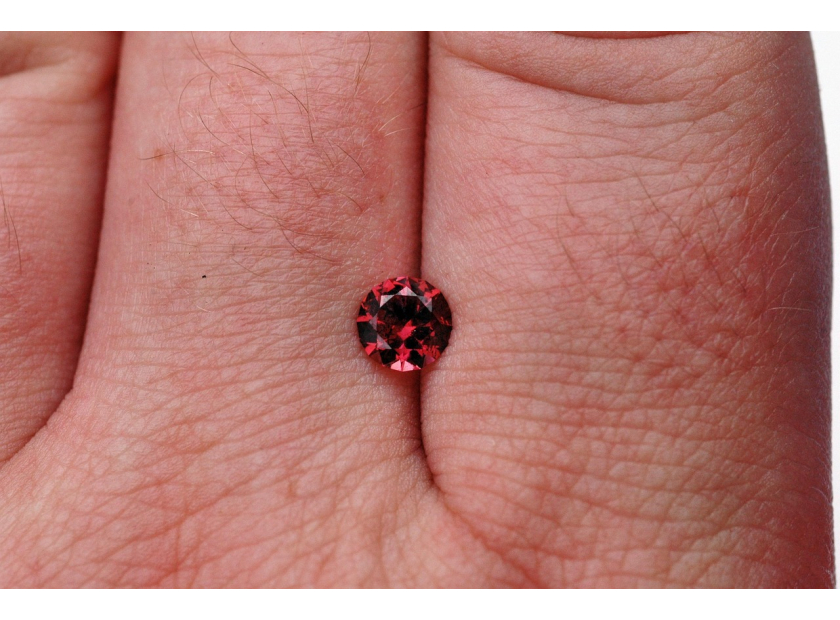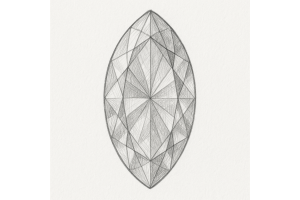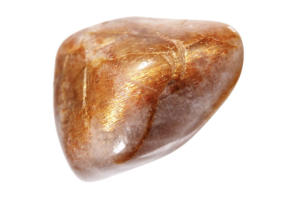GBP
/
GBP
/
Shipping to:
Currency:
Garnet: Unveiling the Deep Allure of January’s Timeless Birthstone
Garnet: Unveiling the Deep Allure of January’s Timeless Birthstone
January, a month of fresh starts and frosty mornings, kicks off the year with a birthstone that’s as bold as it is beautiful: garnet. With its rich, deep hues—think mulled wine, glowing embers, or the heart of a ruby—garnet captures the essence of winter’s chill while bringing a warm, radiant energy. Far more than just a pretty stone, garnet carries centuries of legend, symbolism, and even practical uses.
Let’s dive into the world of garnet—its origins, symbolism, diverse varieties, modern appeal, and why it continues to be a favorite for those born in the first month of the year.
Unveiling the Origins
The name "garnet" comes from the Latin word granatum, meaning pomegranate. It’s easy to see the connection—the stone’s deep red crystals resemble the seeds of the fruit. But garnet’s story began long before it had a name. This silicate mineral has been around for millions of years and has been used by people as early as the Bronze Age.
Archaeologists have found garnet in ancient Egyptian tombs, Roman rings, Viking amulets, and Anglo-Saxon burial sites. It’s one of the oldest known gemstones used in human civilization. And its global appeal didn’t stop there. Garnet has been discovered on nearly every continent, and its production continues today in countries like India, Madagascar, Sri Lanka, Russia, Brazil, Kenya, and even in parts of the United States and United Kingdom.
Each region produces garnet with slightly different characteristics—richer reds, bright oranges, lush greens, or even pink and purple tones. This geological variety makes garnet a globe-trotting gem that tells the story of its origin through color and brilliance.
Myths, Legends, and Symbolism
Like many gemstones, garnet is steeped in mythology and spiritual symbolism. It’s long been associated with protection, passion, and power.
In ancient Egypt, garnet was a symbol of life. Pharaohs were buried with garnet jewelry to carry their strength into the afterlife. The stone was thought to protect the soul on its journey through the underworld.
In ancient Rome, garnets were commonly used in signet rings used to stamp wax seals on documents—a practical use, but also symbolic of authority and loyalty.
During the Middle Ages, crusaders and warriors carried garnets into battle, believing the gem would shield them from injury and bring courage. Some even believed garnet could stop bleeding or heal inflammatory diseases.
And then there’s the biblical tale of Noah—legend says he used a glowing garnet to illuminate the ark during the great flood, highlighting the stone’s reputation as a guiding light in darkness.
In folklore from Asia and Europe, garnet became a symbol of love and fidelity, often exchanged between loved ones during times of separation. Its deep red hue was thought to represent the heart, blood, and enduring emotional bonds.
The Radiant Spectrum: Garnet’s Unexpected Colors
Ask most people to describe a garnet, and they’ll probably say “deep red.” And while the classic crimson is certainly iconic, garnet actually comes in a full spectrum of colors—making it one of the most colorful gemstones available.
- Red: The most well-known, often associated with almandine or pyrope garnets.
- Green: Rare and striking, including tsavorite and demantoid, which can rival emerald in brightness.
- Orange and Yellow: Spessartine garnets glow in vivid, sunlit tones.
- Brown and Earthy Shades: Grossular garnets often show warm, golden-brown tones.
- Pink to Purple: Some garnets take on delicate shades of rose or plum.
This color range is thanks to the unique chemical composition of each garnet type. Elements like iron, manganese, magnesium, or calcium change the stone’s appearance as it forms deep within the Earth’s crust. Some garnets even exhibit color-change properties, shifting from green to red under different lighting conditions—similar to alexandrite.
Meet the Garnet Family: Types You Should Know
- Almandine: The most common garnet, known for its deep red tones with hints of brown or violet. It’s robust and affordable.
- Pyrope: This variety showcases pure, vivid red, often with a fiery, ruby-like appearance.
- Spessartine: Known as the “Mandarin garnet,” it ranges from bright orange to yellow-orange and is prized for its rarity.
- Grossular: A diverse group that includes green tsavorite and golden hessonite.
- Andradite: Includes demantoid, one of the brightest green garnets with exceptional fire.
- Uvarovite: An uncommon bright green garnet, typically found in small crystal clusters.
Each garnet type offers a different aesthetic, so there’s truly a garnet for every taste. Whether you’re drawn to intense reds or lush greens, this birthstone delivers diversity in spades.
Healing and Spiritual Properties
In modern crystal healing, garnet is thought to:
- Boost energy and vitality
- Inspire creativity and confidence
- Support heart health and circulation
- Encourage grounding and emotional balance
- Ignite passion and intimacy in relationships
It’s also believed to be a stone of commitment, making it a thoughtful gift between partners or friends. Whether you wear it for its meaning or just its beauty, garnet’s symbolism adds a layer of depth to its charm.
Garnet in Modern Jewelry
Thanks to its rich color, durability, and affordability, garnet is a favorite among jewelers. It pairs beautifully with a range of metals—yellow gold brings out its warmth, while white gold or silver creates striking contrast.
Designers love working with garnet because it plays well in many styles:
- Vintage or Art Deco settings with milgrain detailing
- Modern minimalist designs featuring sleek metal bands
- Bohemian and natural pieces paired with raw or uncut stones
- Statement cocktail rings with oversized garnets
You’ll find garnet featured not only in birthstone collections but also in bridal and high-end designer jewelry. For pairing ideas, explore wedding band options that complement garnet beautifully.
Caring for Your Garnet Jewelry
Though relatively tough (6.5–7.5 on the Mohs scale), garnet still requires proper care:
- Clean with warm water, mild soap, and a soft brush.
- Avoid ultrasonic cleaners or harsh chemicals.
- Store separately to avoid scratches from harder stones.
- Remove rings during physical activities or cleaning.
With proper care, garnet jewelry remains vibrant and beautiful for generations.
Final Thoughts
Garnet is far more than January’s designated gem—it’s a symbol of enduring beauty, rich history, and personal strength. Whether you’re celebrating a birthday, honoring a relationship, or simply drawn to its timeless elegance, garnet offers a world of meaning and variety.
From classic red almandine to rare green tsavorite, from ancient legends to modern styling, garnet is a gem with depth and soul. It’s the perfect companion for January’s themes of new beginnings, inner fire, and quiet strength.
So if you're looking to add a touch of timeless warmth to your collection—or to gift something meaningful to someone special—let garnet light the way.








